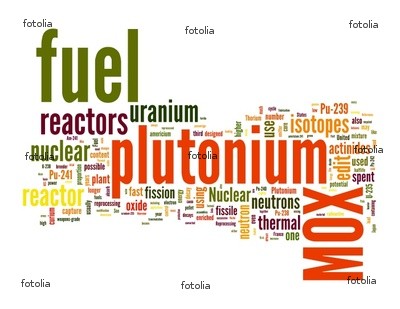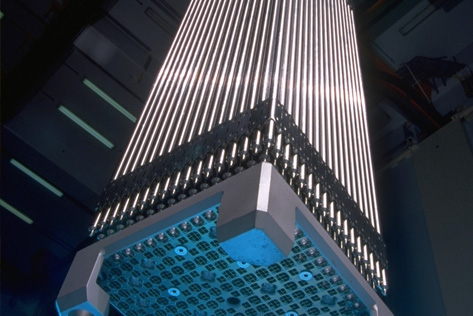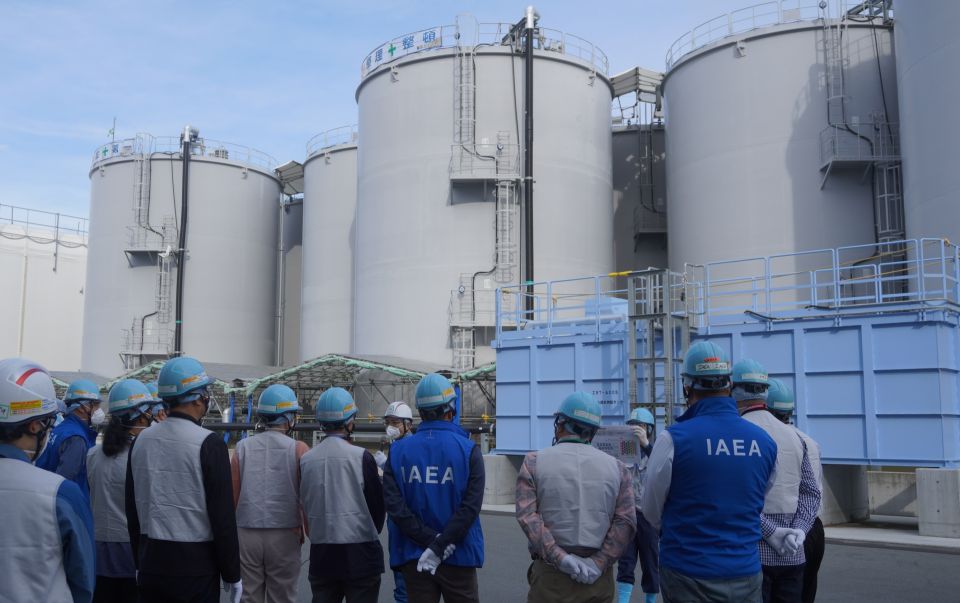Impact of MOX Fuel at Fukushima
A plain English explanation
 Based on alarms raised by scientists in Japan and elsewhere about the use of mixed oxide fuel (MOX) in the Fukushima reactor #3, the American Nuclear Society (ANS) published a technical brief on the issue on March 25, 2011. It contains factual information on the impact of mixed oxide fuel use at Fukushima Daiichi.
Based on alarms raised by scientists in Japan and elsewhere about the use of mixed oxide fuel (MOX) in the Fukushima reactor #3, the American Nuclear Society (ANS) published a technical brief on the issue on March 25, 2011. It contains factual information on the impact of mixed oxide fuel use at Fukushima Daiichi.
There are two key points that emerge from the ANS Technical Brief which was prepared by ANS members contributing their expertise as individuals and not on behalf of their respective employers. The paper is being published online by the ANS Special Committee on Nuclear Nonproliferation.
No significant impact on reactor cooling or releases of radioactivity
Mixed Oxide (MOX) fuel has been used safely in nuclear power reactors for decades. The presence of a limited number of MOX fuel assemblies at Fukushima Daiichi Unit 3 has not had a significant impact on the ability to cool the reactor or on any radioactive releases from the site due to damage from the earthquake and tsunami.
Less than 6% of fuel in core was MOX
At the time of the magnitude 9.0 earthquake, Fukushima Daiichi Unit 3 was operating with 32 mixed oxide (MOX) fuel assemblies and 516 low enriched uranium (LEU) fuel assemblies in its reactor core. In other words, less than 6 percent of the fuel in the Unit 3 core was MOX fuel. There were no other MOX fuel assemblies (new, in operation or used) at the Fukushima Daiichi plant at the time of the accident.
Questions and Answers about MOX

A typical MOX fuel assembly for a commercial nuclear reactor
What is mixed oxide (MOX) fuel?
· MOX fuel is a mixture of plutonium and uranium.
· MOX fuel is typically made using plutonium recycled from used nuclear fuel (i.e., reactor-grade (RG) MOX), but it can also be made using surplus plutonium from nuclear weapons (i.e., weapons-grade (WG) MOX).
· Low-enriched uranium (LEU) fuel commonly used in commercial nuclear reactors initially has no plutonium. During irradiation in a reactor it builds up plutonium as a result of the nuclear reactions.
· Toward the end of its useful life LEU fuel contains about 1% plutonium and actually produces about half of its power from this plutonium rather than uranium. RG MOX is fabricated from this recycled plutonium.
· WG MOX has a higher concentration of the Pu-239 isotope, which is more desirable for power generation than other plutonium isotopes.
· Low enriched uranium (LEU) fuel for commercial nuclear reactors has about 95-97 percent U238 and the remainder, the importance fissile isotope of U235, at 3-5%.
· In MOX fuel plutonium takes the place of the U235 isotope in low enriched fuel in a range of 4-9 percent depending whether the plutonium was derived from reprocessing commercial spent fuel or from weapons grade plutonium.
How does reactor operation with MOX fuel differ from operation with LEU fuel?
· Based on current practice and future plans, MOX and LEU fuels would be loaded into the core at the same time, with the fraction of the core using MOX typically in the range of 30-40 percent.
· The MOX core would be designed and licensed to the same operating and safety criteria as an all LEU core (e.g. same operating temperature, electrical output, etc.). The MOX core may require enhanced reactivity controls (increased soluble boron in the reactor coolant and/or additional control rods) to meet the licensed operating conditions.
· Operations with a MOX core would be nearly identical to operations with an all LEU core.
Are the consequences of an accident worse using MOX fuel?
· Both LEU fuel and MOX fuel meet conservative NRC safety criteria for design basis events.
· Independent safety authorities in five different countries have reviewed the use of MOX fuel in commercial nuclear plants, including severe accident analysis, and found that it meets all licensing and safety requirements.
· For beyond design basis events (i.e. significant fuel damage, loss of primary containment integrity and some atmospheric dispersal) the consequences from a 40% WG MOX fuel core would not be significantly worse than those with an all LEU fuel core.
What about storing irradiated MOX fuel? Is MOX fuel hotter?
· Right after reactor shutdown, irradiated fuel produces heat due to the decay of radioactive isotopes contained within the fuel equal to about 7% of pre-shutdown operating power.
· Irradiated MOX fuel initially produces about 4 percent less decay heat than equivalent LEU fuel. Decay heat production falls off very rapidly for both fuel types, to less than 1 percent of original operating power after 24 hours. However, decay heat production in MOX fuel declines at a slower rate than LEU fuel due to isotopic differences in the irradiated MOX fuel. Eventually irradiated MOX fuel produces slightly more decay heat than irradiated LEU fuel, about 16 percent more after 5 years.
· After about 5 years, the decay heat load from both fuel types is about the same as one or two medium-sized hair dryers for each used fuel assembly. Used fuel with this decay heat rate is sufficiently cooled to allow loading into dry cask storage.
For more information on MOX fuel at Fukushima, please read the ANS Technical Brief available online at the ANS web site.
# # #






